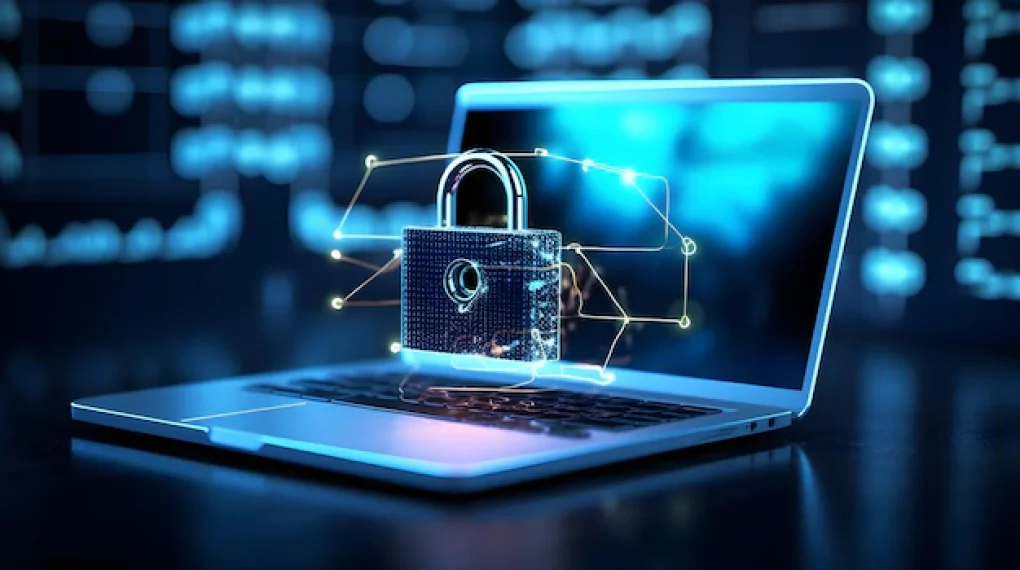In an era where digital security is paramount, end-to-end encryption has emerged as a critical tool in protecting our online communications and data.
This technology, once a niche concept in the realm of cybersecurity, is now a mainstream feature in many applications we use daily. Understanding end-to-end encryption is essential not just for IT professionals but for anyone who uses digital technology.
This article aims to demystify end-to-end encryption, exploring its workings, importance, and the various contexts in which it is used, providing a comprehensive insight into why it’s considered a cornerstone of modern cybersecurity.
Understanding End-to-End Encryption
End-to-end encryption serves as a secure communication technique, barring third-party access to data during its transfer from one system to another. In this process, encryption occurs at the sender’s end, and only the intended recipient possesses the ability to decrypt the received data. Consequently, intermediaries, including the service providers themselves, lack the capability to interpret the content.
This contrasts with other forms of encryption, where data may be encrypted while in transit but remains accessible to the service provider. End-to-end encryption’s primary aim is to make the data comprehensible solely to the involved parties in the communication, thereby offering robust protection against any form of interception and unauthorized access.
The Role in Cybersecurity
End-to-end encryption plays a pivotal role in the landscape of cybersecurity. It acts as a robust barrier against a variety of cyber threats, from data breaches to unauthorized surveillance. In the context of professional development, understanding the nuances of this encryption is crucial, especially for those pursuing a cyber security MBA.
Such advanced academic programs delve deep into encryption techniques, equipping future cybersecurity professionals with the expertise to implement and manage end-to-end encryption effectively in various digital environments, thus enhancing overall data security.
Applications of End-to-End Encryption
The applications of end-to-end encryption are vast and varied. It’s most commonly associated with messaging apps like WhatsApp and Signal, where it secures the privacy of personal and group conversations.
Beyond messaging, end-to-end encryption is also employed in email services, secure file storage, and even in financial transactions. By encrypting data at the source and only decrypting it at the destination, this technology ensures that sensitive information remains confidential and tamper-proof during its entire journey across the internet.
The Benefits of End-to-End Encryption
The primary benefits of end-to-end encryption are enhanced privacy and security. By ensuring that only the intended recipients can access the data, it effectively shields sensitive information from hackers, cybercriminals, and even government surveillance.
This form of encryption is crucial for maintaining the confidentiality of communications, and protecting personal information, trade secrets, and other critical data. It’s particularly important in scenarios where data security is paramount, such as in legal and medical fields, where client and patient confidentiality is a legal requirement.
Challenges and Limitations
Despite its strengths, end-to-end encryption is not without its challenges and limitations. One of the main issues is the complexity of key management, which involves securely generating, storing, and exchanging cryptographic keys. If these keys are compromised, so is the security of the encrypted data.
Additionally, implementing end-to-end encryption can sometimes impact user experience, making applications more cumbersome to use. There’s also the challenge of balancing strong encryption with legal requirements for access, particularly in cases involving law enforcement and national security. These challenges require careful consideration and continuous technological advancement to ensure that end-to-end encryption remains both secure and practical.

End-to-End Encryption and Privacy Laws
The implementation of end-to-end encryption intersects significantly with global privacy laws and regulations. These laws, such as the General Data Protection Regulation (GDPR) in Europe, often mandate the protection of personal data, for which end-to-end encryption is a key tool.
However, the application of encryption must be balanced with legal requirements for data access and transparency. For instance, law enforcement agencies sometimes require access to encrypted data for criminal investigations, creating a complex dialogue between privacy advocates and legal authorities. Navigating this landscape requires a deep understanding of both the technological aspects of encryption and the legal frameworks governing data privacy.
Key Management in End-to-End Encryption
Key management is a critical aspect of end-to-end encryption. It involves the creation, distribution, and storage of cryptographic keys, which are used to encrypt and decrypt data. Effective key management ensures that these keys are available to authorized users while remaining inaccessible to others.
This process can be challenging, particularly in large organizations or systems where numerous users require access. Secure key management systems are essential to prevent unauthorized access to encrypted data, and they often involve complex protocols and infrastructure to maintain the integrity and availability of keys.
Recent Developments in End-to-End Encryption
Recent technological advancements have significantly enhanced the capabilities and effectiveness of end-to-end encryption. Developments in quantum computing, for instance, promise to create new encryption methods that could be virtually unbreakable.
Additionally, advancements in software and hardware have made encryption more accessible and easier to implement across various platforms and devices. These developments are crucial in staying ahead of evolving cyber threats and ensuring that end-to-end encryption remains a reliable method for protecting data privacy and security.
End-to-End Encryption in Business
For businesses, end-to-end encryption is an essential tool in protecting sensitive corporate data and communications. In an era where corporate espionage and data breaches are increasingly common, employing robust encryption practices is critical.
Businesses use end-to-end encryption to secure everything from internal communications to customer data, ensuring that this information remains confidential and secure. Implementing such encryption not only protects against external threats but also helps in building trust with customers and clients who are increasingly concerned about their data privacy.
The Future of End-to-End Encryption
Looking to the future, end-to-end encryption is likely to become even more integral to our digital lives. As cyber threats continue to evolve in complexity, so too will encryption technologies. One of the key areas of development will be in making encryption more user-friendly and accessible, ensuring that robust security does not come at the expense of usability.
Additionally, the ongoing debate between encryption and legal access will continue to shape the future of digital privacy and cybersecurity. As new technologies emerge, the field of encryption will need to adapt rapidly to protect against novel threats and vulnerabilities.
Conclusion
End-to-end encryption stands as a cornerstone of digital security and privacy. In a world where data breaches and cyber threats are increasingly common, this technology offers a crucial line of defense in protecting sensitive information. From its role in complying with privacy laws to its implementation in businesses, end-to-end encryption is a complex yet essential aspect of modern cybersecurity.
As we look forward, the continued evolution and adaptation of encryption technologies will be vital in safeguarding our digital world. Understanding the intricacies of end-to-end encryption is not just for IT professionals but is becoming increasingly important for everyone in our interconnected society. By staying informed and proactive, we can all contribute to a more secure and private digital future.
Read Also:






